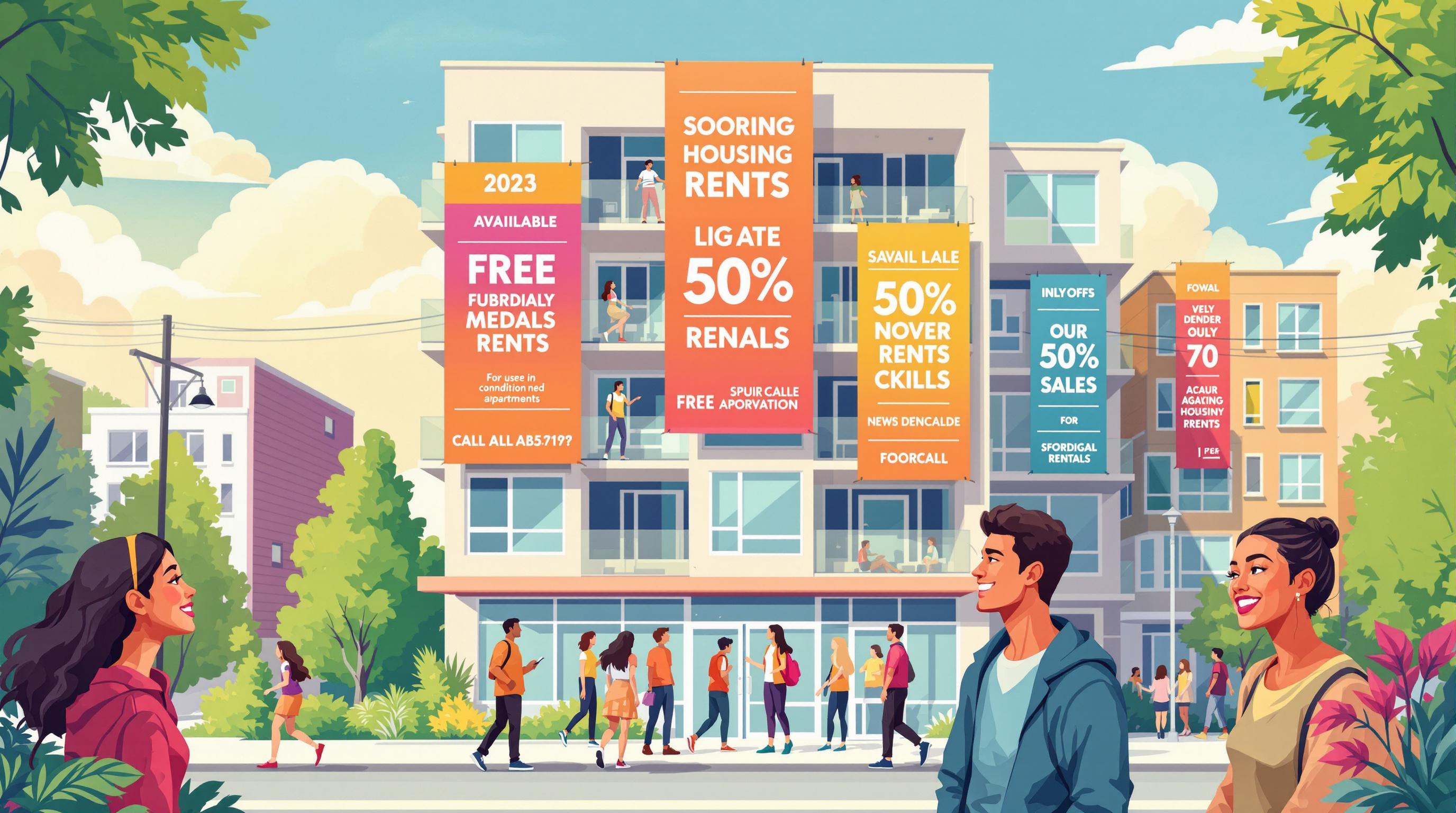Rent increases in Nova Scotia for 2025 are capped at 5% for most properties, with specific rules for notice periods and mobile homes. Here's what landlords and tenants need to know:
- Rent Cap: 5% for standard residential properties, 5.8% for mobile homes.
- Notice Periods:
- Standard residential: 4 months.
- Weekly leases: 8 weeks.
- Mobile homes: 7 months before the lease anniversary.
- Lease Rules: Rent can only increase after 12 months since the last increase or lease start.
- Exceptions: Mobile home landlords can apply for increases beyond the cap with approval.
Landlords must follow strict notice requirements, including clear communication of the new rent amount and effective date. Failure to comply allows tenants to challenge increases. Tools like property management software can help ensure compliance and simplify the process.
What You Should Consider When Creating a Rent Increase Notice Letter
Notice Requirements
In Nova Scotia, landlords must follow specific rules when notifying tenants about rent increases, as outlined by provincial law [1]. Here's what landlords need to know about timing and content requirements.
Notice Timeframes
The amount of notice required depends on the type of rental property:
- Standard residential properties: Four months' notice.
- Weekly leases: Eight weeks' notice.
- Mobile homes in land-lease communities: Seven months' notice before the lease anniversary date.
For example, if a rent increase is set to take effect on July 1, 2025, tenants in standard residential units must be informed by March 1, 2025.
Notice Content
The notice must clearly state the new rental amount and the date it will take effect [1]. For mobile home land-lease communities, landlords are required to use Form M – Landlord's Notice of Rent Increase to ensure all necessary details are included.
What Happens If Rules Aren’t Followed?
If landlords fail to meet these requirements, tenants can challenge the increase through the Residential Tenancies Program. To simplify the process, tools like Kirin Property Management offer automated solutions for creating notices and keeping track of compliance.
Rent Increase Schedule Rules
Yearly Increase Limits
After following notice requirements, there are specific rules about how much and when rent can be increased. For standard residential properties, the maximum annual increase is 5%, while for mobile homes in land-lease communities, it’s 5.8% [1]. In land-lease communities, the Annual Allowable Rent Increase Amount (AARIA) is calculated based on the average percentage changes in the Nova Scotia Consumer Price Index over the previous two calendar years [3].
Lease Anniversary Dates
Landlords can only raise rent if at least 12 months have passed since the last increase or the start of the lease. Mobile home tenants are also protected from rent hikes during their first year [1]. Starting February 3, 2023, rent increases can happen at any time of the year, provided proper notice is given and the 12-month interval is upheld. In land-lease communities, a common anniversary date is used for both rule changes and rent increases [4].
Rule Exceptions
For mobile home communities, landlords can apply for rent increases beyond the standard limits. This requires a formal application to the Director of Residential Tenancies, which costs $31.15 and typically takes one to three months to process [1]. Additionally, if a rent increase in a land-lease community is below the allowable amount, landlords can carry forward the unused portion to the next year. This gives landlords some flexibility while staying within the regulatory framework [3].
sbb-itb-00c8bef
Exempt Properties
Some properties operate under unique rules that differ from standard scheduling requirements.
Public Housing and Mobile Homes
Public housing units are governed by local housing authority regulations rather than provincial rent controls [6]. Mobile homes and land-lease communities follow separate exemption guidelines, which include formal applications for rent increases beyond standard limits [1].
Here’s a breakdown of the AARIA trends for mobile homes:
| Year | Maximum Allowable Increase |
|---|---|
| 2026 | 3.2% |
| 2025 | 5.8% |
| 2024 | 5.8% |
Additional Exemptions
Land-lease communities, including mobile home parks, have more flexibility in rent adjustments. If a landlord doesn’t apply the full allowable increase (5.8%), they can carry the unused portion forward [1]. However, exceeding the standard AARIA limits requires a formal application with proper documentation [7]. For mobile home park owners, this process is strictly regulated [7].
It’s important to note that rent caps don’t apply to lot fee increases in land-lease communities like mobile home parks. These communities handle rate-setting through their own procedures [5].
Digital Tools for Rent Management
With Nova Scotia's 2025 rent increase rules in place, digital tools can make compliance and market analysis much easier. These tools integrate with property management processes, helping landlords stay efficient while meeting legal requirements.
Property Management Software Features
Good property management software should include features like:
- Automated rent increase notice creation
- Tracking to ensure compliance with notice periods
- Secure storage for rent increase communications
- Tools for managing tenant communication
- Options for organizing digital documentation
These features reduce the risk of non-compliance and ensure tenants are properly notified.
Tools for Market Analysis
Market analysis tools go beyond compliance, offering insights to help landlords set competitive rental rates. These tools often provide:
- Local market rent comparisons
- Data on historical rental trends
- Tracking for operating costs
- Analysis of vacancy rates
This information helps landlords make smarter decisions while staying within Nova Scotia's 5% rent increase cap for 2025.
Kirin Property Management Services

Kirin Property Management offers a platform designed to simplify rent management. Their features include:
- A real-time reporting portal for property owners
- Automated notice generation with compliance tracking
- AI-powered Comparative Market Analysis (CMA)
- Maintenance tracking to document property improvements
For their Premium Management packages, they charge 11% management fees for portfolios with fewer than three properties and 10% for larger portfolios.
Summary
Following Notice Rules
Nova Scotia's 2025 rent increase regulations require landlords to adhere strictly to timing and documentation rules. The province has set a rent cap of 5% through December 31, 2027 [2], with specific conditions depending on the lease type [1].
Key points include proper notice timing, detailed documentation, annual increase limits, and unique rules for mobile homes. Recent updates to the Residential Tenancies Act have also shortened the eviction process for rental arrears [2], making precise notices even more critical.
To handle these requirements effectively, many landlords are now using digital management tools.
Management Tools
Digital tools help landlords stay compliant and improve rental income. These platforms can track notices, store communication records, and provide market insights for smarter pricing decisions.
Kirin Property Management offers a combination of automated compliance features and market analysis tools to simplify operations for landlords.
"After switching from my old manager, I realized how much time and money I'd been losing. Kirin's data-driven approach got me another $150/month in rent, and their maintenance crew is fast and fair-priced." [8] – Michael T., Dartmouth Landlord
"We listed our condo at $200 more than we thought possible, and it still filled in two weeks! Kirin's CMA nailed the price, and we haven't had a day of vacancy since." [8] – Natalie L., Halifax Condo Owner
For landlords managing 2025 rent increases, digital tools can ensure compliance while boosting property performance through automated notices, market analysis, and organized documentation.



